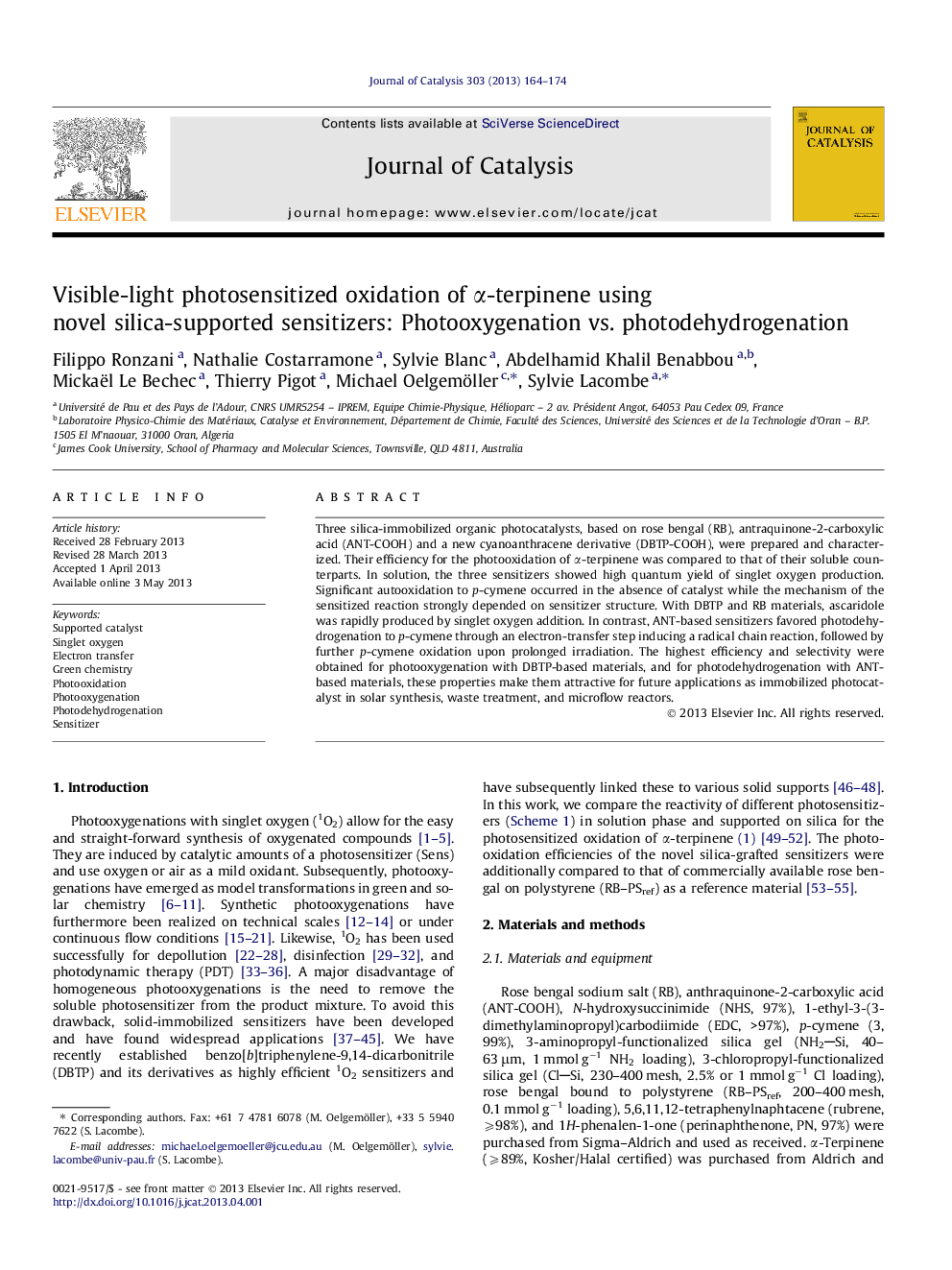| کد مقاله | کد نشریه | سال انتشار | مقاله انگلیسی | نسخه تمام متن |
|---|---|---|---|---|
| 61268 | 47573 | 2013 | 11 صفحه PDF | دانلود رایگان |

• Comparison of three silica-immobilized organic photocatalysts.
• Development of a novel silica-supported cyanoaromatic photosensitizer.
• Selective photooxygenation or photodehydrogenation depended on the photosensitizer.
• Dual behavior of anthraquinone sensitizer: energy vs. electron transfer.
• Green and selective synthesis of ascaridole or p-cymene.
Three silica-immobilized organic photocatalysts, based on rose bengal (RB), antraquinone-2-carboxylic acid (ANT-COOH) and a new cyanoanthracene derivative (DBTP-COOH), were prepared and characterized. Their efficiency for the photooxidation of α-terpinene was compared to that of their soluble counterparts. In solution, the three sensitizers showed high quantum yield of singlet oxygen production. Significant autooxidation to p-cymene occurred in the absence of catalyst while the mechanism of the sensitized reaction strongly depended on sensitizer structure. With DBTP and RB materials, ascaridole was rapidly produced by singlet oxygen addition. In contrast, ANT-based sensitizers favored photodehydrogenation to p-cymene through an electron-transfer step inducing a radical chain reaction, followed by further p-cymene oxidation upon prolonged irradiation. The highest efficiency and selectivity were obtained for photooxygenation with DBTP-based materials, and for photodehydrogenation with ANT-based materials, these properties make them attractive for future applications as immobilized photocatalyst in solar synthesis, waste treatment, and microflow reactors.
Original, efficient, and reusable silica-supported photosensitizers were easily prepared. High quantum yields of singlet oxygen production do not imply [4 + 2] cycloaddition on α-terpinene to yield ascaridole. Depending on the sensitizer electron-transfer mechanism to p-cymene is also possible.Figure optionsDownload high-quality image (92 K)Download as PowerPoint slide
Journal: Journal of Catalysis - Volume 303, July 2013, Pages 164–174